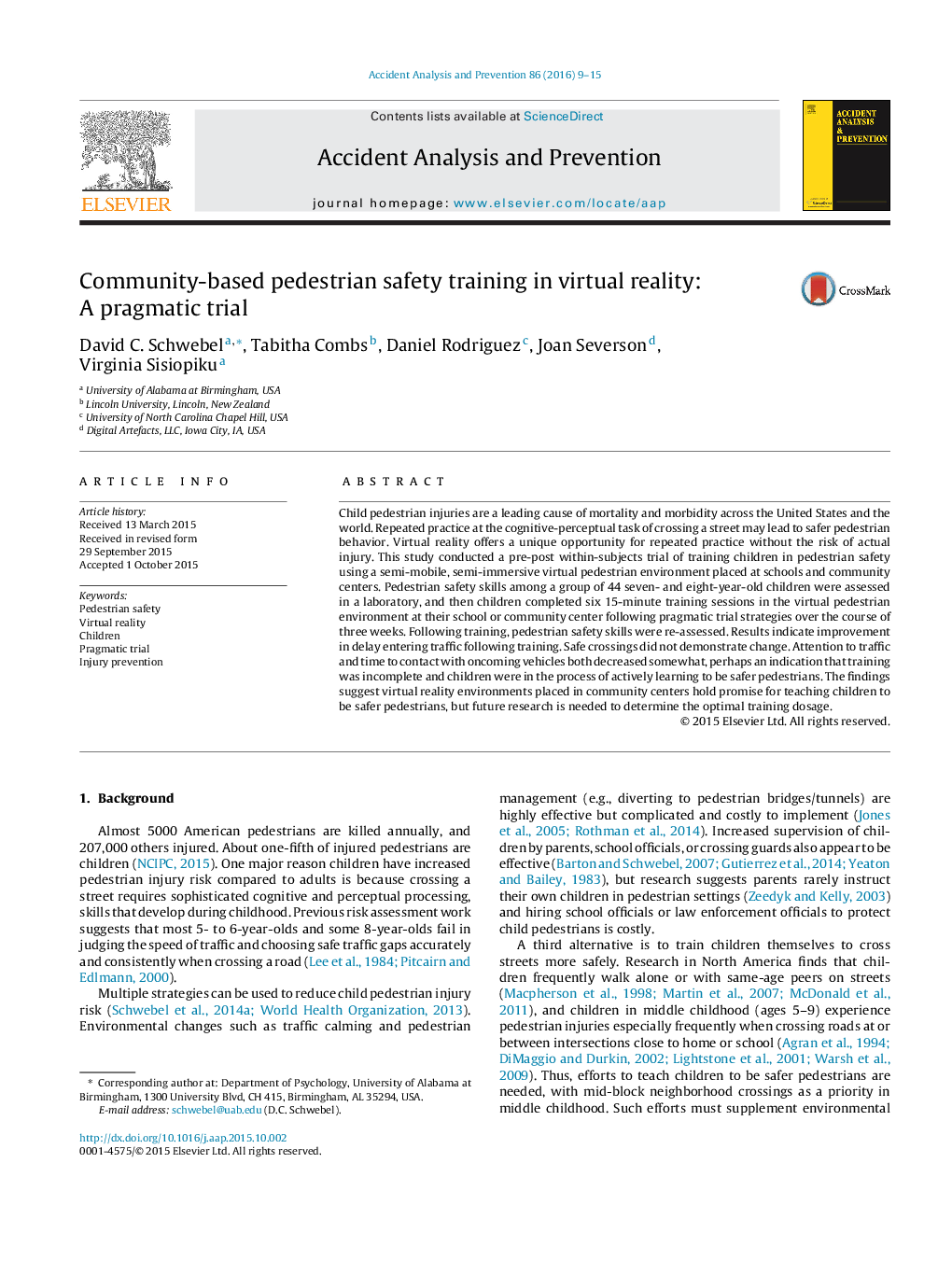| Article ID | Journal | Published Year | Pages | File Type |
|---|---|---|---|---|
| 6965388 | Accident Analysis & Prevention | 2016 | 7 Pages |
Abstract
Child pedestrian injuries are a leading cause of mortality and morbidity across the United States and the world. Repeated practice at the cognitive-perceptual task of crossing a street may lead to safer pedestrian behavior. Virtual reality offers a unique opportunity for repeated practice without the risk of actual injury. This study conducted a pre-post within-subjects trial of training children in pedestrian safety using a semi-mobile, semi-immersive virtual pedestrian environment placed at schools and community centers. Pedestrian safety skills among a group of 44 seven- and eight-year-old children were assessed in a laboratory, and then children completed six 15-minute training sessions in the virtual pedestrian environment at their school or community center following pragmatic trial strategies over the course of three weeks. Following training, pedestrian safety skills were re-assessed. Results indicate improvement in delay entering traffic following training. Safe crossings did not demonstrate change. Attention to traffic and time to contact with oncoming vehicles both decreased somewhat, perhaps an indication that training was incomplete and children were in the process of actively learning to be safer pedestrians. The findings suggest virtual reality environments placed in community centers hold promise for teaching children to be safer pedestrians, but future research is needed to determine the optimal training dosage.
Related Topics
Physical Sciences and Engineering
Chemical Engineering
Chemical Health and Safety
Authors
David C. Schwebel, Tabitha Combs, Daniel Rodriguez, Joan Severson, Virginia Sisiopiku,
